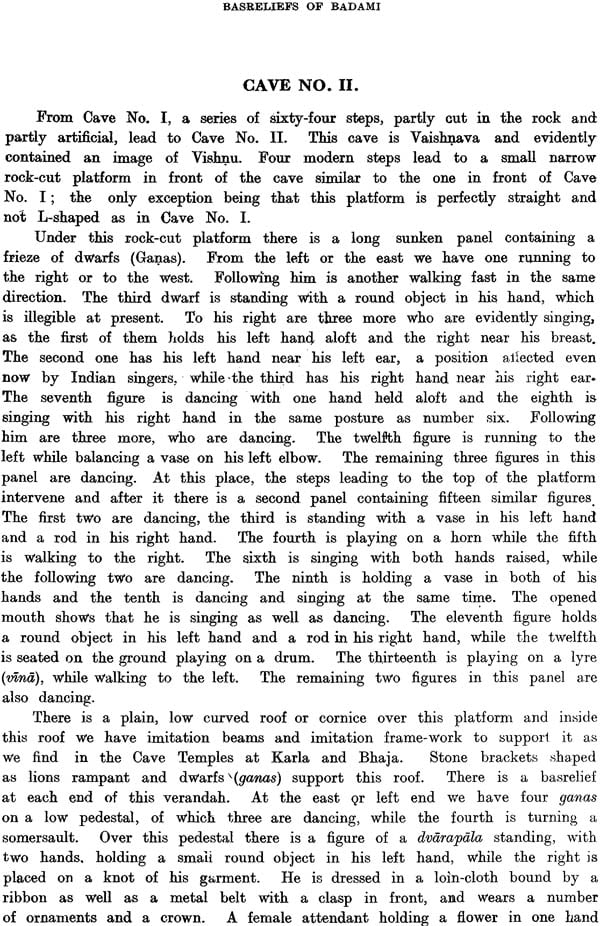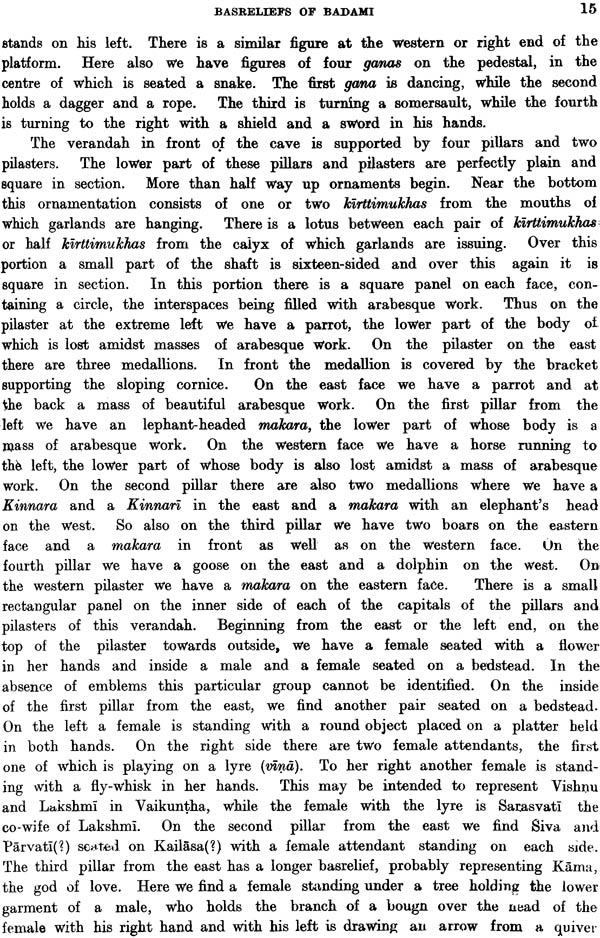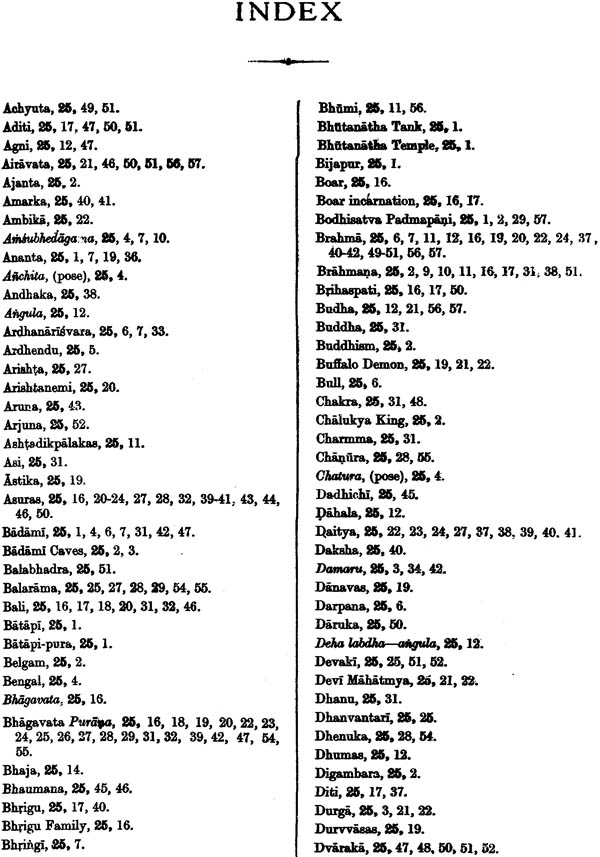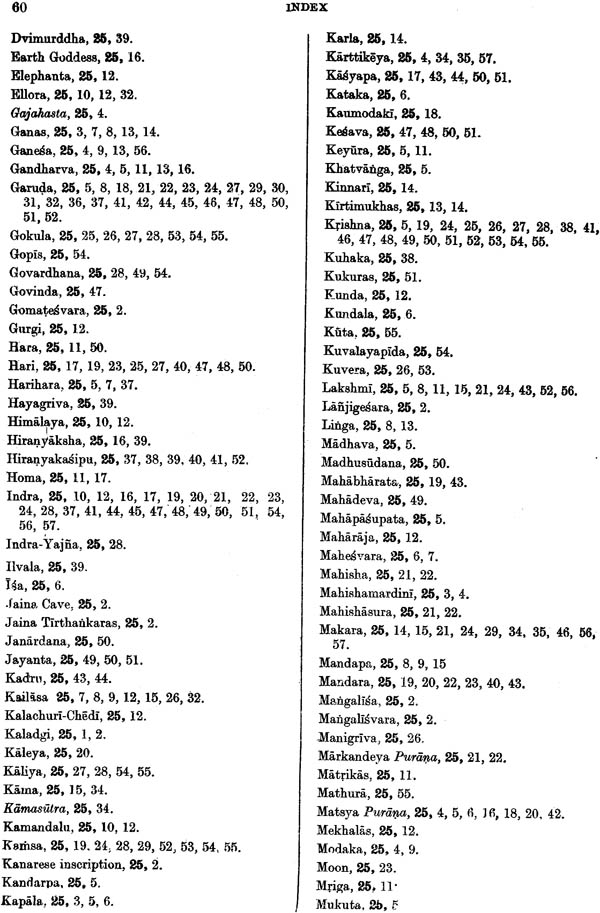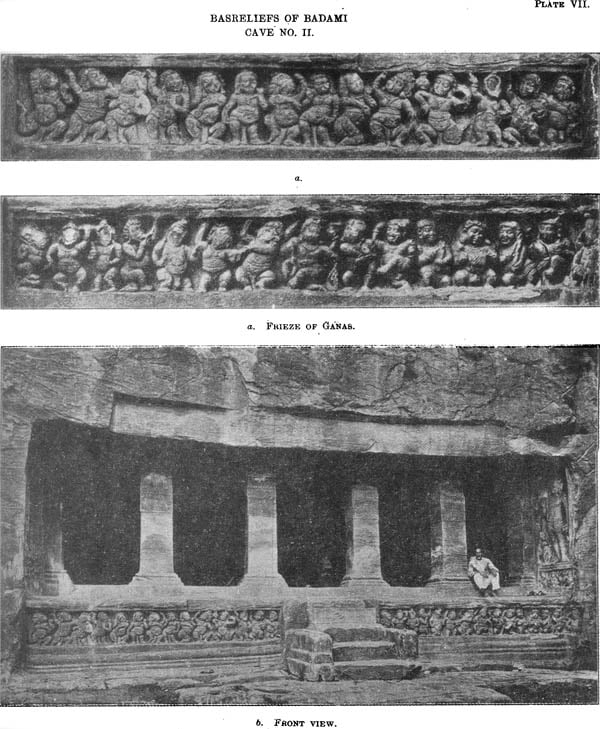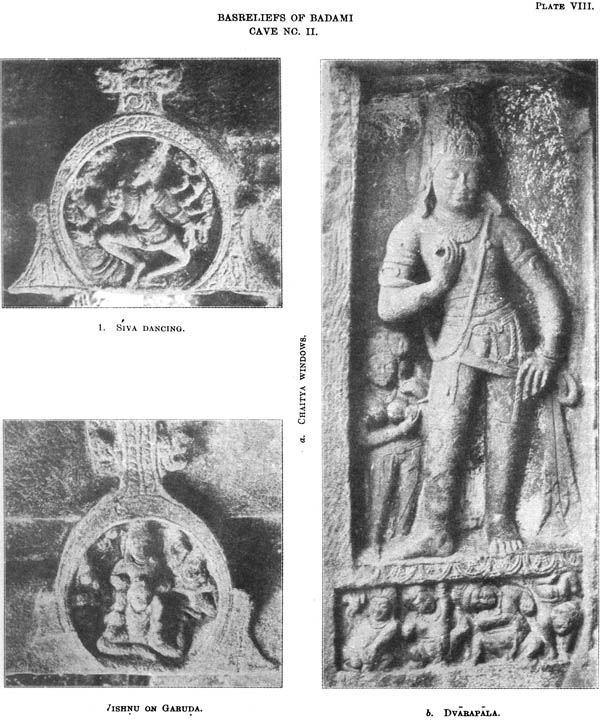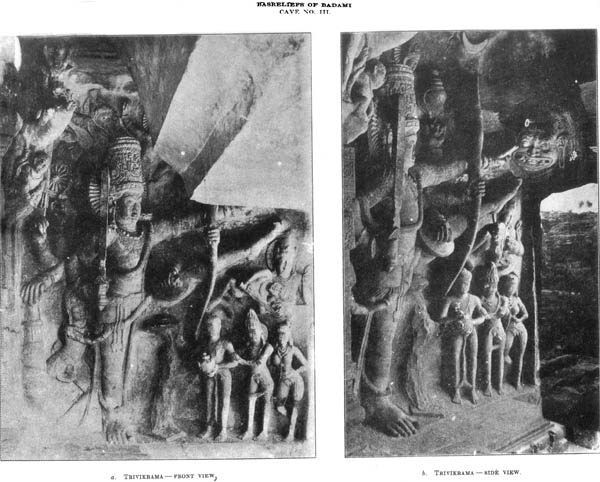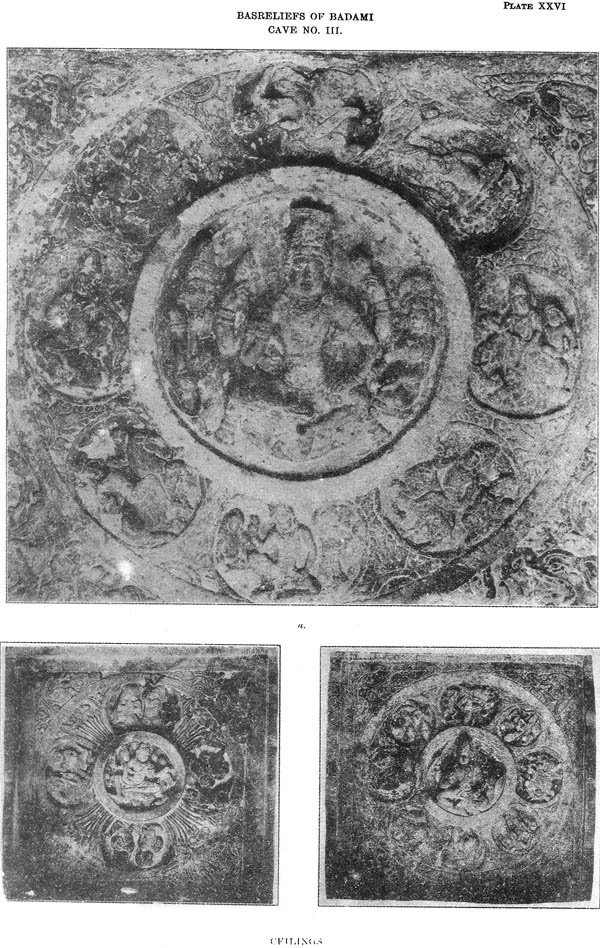
Basreliefs of Badami (An Old and Rare Book)
Book Specification
| Item Code: | NAM206 |
| Author: | R. D. Banerji |
| Publisher: | Archaeological Survey of India |
| Language: | English |
| Edition: | 1998 |
| Pages: | 197 (91 B/W Illustrations) |
| Cover: | Hardcover |
| Other Details | 11.0 inch X 9.0 inch |
| Weight | 610 gm |
Book Description
Badami, Batapl or Batapipura is the chief town of the Taiuka of Badami in the district of Kaladgi, now known as Bijapur, in the south-eastern part of the Bombay Presidency. The Caves at Badami lie at a distance of three miles from the Station of the same name on the Hotgi-Gadag Section of the Madras and Southern Maratha Railway. The hill, in which they have been cut, is situated close to the modern town, or rather the modern town lies very close to the foot of the hill. In ancient times the town was enclosed by two walls and at least two different moats in front, while it was protected at the real by the high hill, on the top of which the remains of two different forts are traceable even now. There is a bend in the first row of hills at the back of the modern town. in front of which a low broad dam was built centuries ago, forming a tank. The tank is now known as the Bhutanatha Tank, and has steps on all four sides. Almost all of the mediaeval shrines are built around this tank, there being at least one mediaeval shrine on the western side i.e. on the dam of the tank. On the northern side, toward the north-east corner, there is a group of Saiva temples called locally Bhutanatha-Temple- group No. II. Similarly there is another group of Saiva temples on the eastern bank i.e, close to the hill side, which is called Bhutanatha-Temple-group No. I. Besides this group of temples there are two rock cut basreliefs on this side of the tank. These are (1) Narayana on Sesha or Ananta which has been enclosed by a small mediaeval temple at some later date and (2) an image of the Bodhisattva Padmapani, which is now almost inaccessible. No steps are visible on a part of the southern bank of the tank. It is on this side that four caves have been cut in the rock. Access can be gained to these caves from a group of Muhammadan tombs built at the foot of the hills, whence a flight of steps carries the visitor to the level of Cave No. I, which is the lowest in the group. The steps are continued in front of Cave No. II which is a. Vaishnava Cave, up to the enclosure outside Cave No. IV. Here the steps bifurcate : one series of steps to the right leading to the fort on the top of the southern hill and the second leading to the enclosure in front of Cave No. IV through a gateway. This enclosure in front of Cave No. IV is also old as we find old Kanarese inscriptions on its walls, To the right of the steps leaping to the fort on. the top of the hill there is an unfinished cave containing a badly mutilated image of the Bodhisattva Padmapani. Beyond Cave No. IV the steps descend to the level of Cave No. V, which is a Jama cave. Although this does not contain any interesting basreliefs, it is full of images of Jaina Tirthankaras of the Digambara sect, and we find an image of Gomatesvara on the left and that of Parsvanatha on the right.
The date of the entire group of Caves is determined by the inscription of the western Chalukya king Mangalesa dated Saka 500=578 A.D. on a pillar in the verandah of Cave No. Ill, as well as by a Kanarese inscription of the same king on the rock wall outside Cave No. Ill. This inscription on the pillar was published for the first tune by Prof. J. Eggeling in 1874. It records the excavation of the cave by Mangalesa or Mangalisvara in Saka 500=578 A.D., and the gift of a village by him for maintaining the worship in the cave and giving relief to sixteen Brahmanas. It was re-edited by Dr. Fleet in Vol. VI of the same journal, It is referred to once more in Vol. X when a better facsimile of the inscription itself was published. The short Kanarese inscription on the rock wall outside was published for the first time in 1881. It contains the name of Mangalesa and his title Prithvivallabha and contains an imprecation against those who are likely to injure “ the gift that has been made at the rate of half a visa to the garland makers who work for the god Lanjigesara, which is the gift to the stone house of the glorious Mangalesa, the favourite of the world.”
There are no inscriptions in any of the other three caves. Of these three the lowest cave or Cave No. I, which is a Saiva cave, appears to be the oldesst Both of the Vaishnava Caves are of the same date, i.e. belong to the sixth century A.D., but -of these, Cave No. Il is possibly earlier than Cave No. IV. Nothing can be said about the date of Cave No. V in which the ornamentations are very elementary. These caves were described in detail for the first time by the late Dr. James Burgess in his first report as Archaeological Surveyor to the Government of Bombay and entitled “Report of the First Season's Operations in the Belgam and Kaladgi Districts, January to May 1874.” When describing these caves Dr. Burgess remarked that “The full delineation of these Badami Caves might be executed without much trouble by a few School of Arts Students under proper direction and if well done would form a valuable illustration of Vaishnava mythology and Indian art only to be equalied by what Ajanta affords for Buddltism." Two years later Dr. Burgess wrote an article .on the sculptures in these Badami Caves in the Indian Antiquary.
This article was illustrated by a number of sketches all of which were from Cave No. IV. In this article Dr. Burgess mentions the existence. of basreliefs in Cave No. Il but he does not illustrate or try to explain any of them. The existence of basreliefs in Cave No. I is not mentioned by Dr. Burgess anywhere. Another short description of the Badami Caves appeared in 1880 in the Cave Temples of India by Fergusson and Burgess.
| List of Illustrations | i |
| Introduction | 1 |
| Cave No. I | 3 |
| Cave No. II | 14 |
| Cave No. III | 29 |
| Cave No. IV | 30 |
| Index | 59 |
